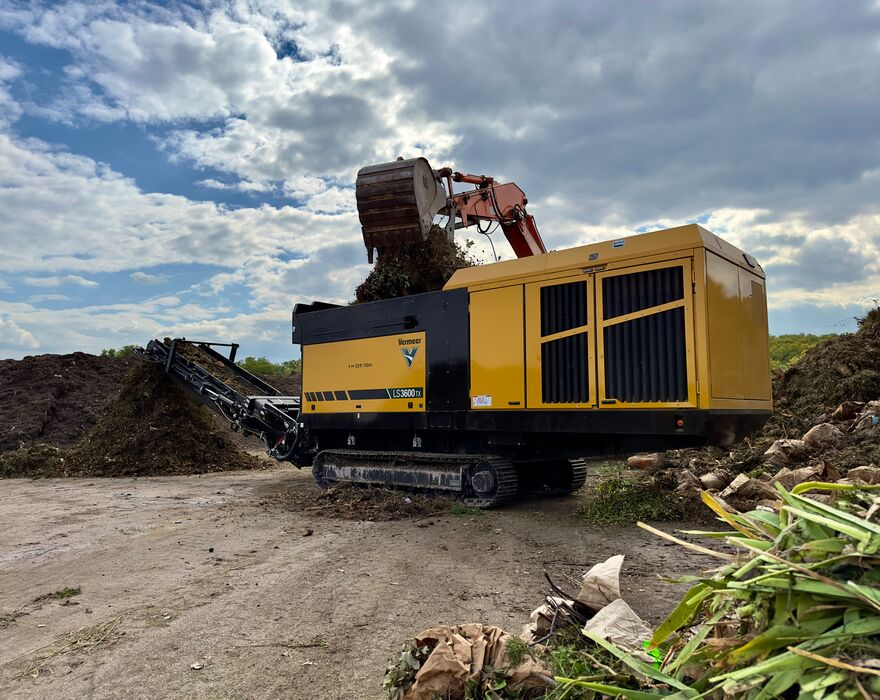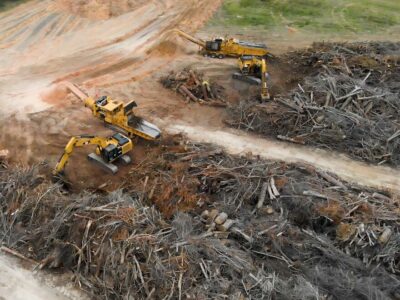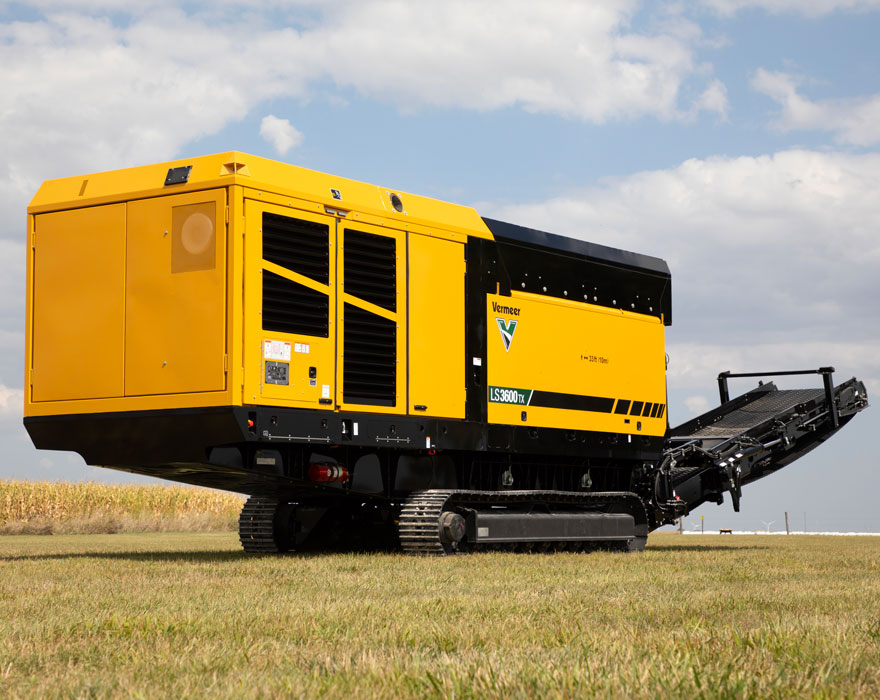Processing wood waste is no longer just about saving landfill space — it’s becoming a revenue stream for many organizations. High speed grinders and low speed shredders are transforming how facilities manage wood waste, creating opportunities beyond volume reduction.
The growing market for recycled wood products
Three primary markets are driving demand for recycled wood materials:
- Compost: With more communities implementing policies to eliminate wood, green and food waste from landfills, the compost market is experiencing significant growth.
- Mulch: Currently, the mulch market is larger than the compost market. The demand for mulch continues to rise as its uses multiply and more people grow their own produce.
- Biomass and biofuel: A thriving international market, the biomass market in the US holds potential as renewable energy policies evolve.
These markets allow waste facilities to transform wood waste into sellable products, opening up new revenue streams.
High speed grinders vs. low speed shredders
Two main types of machines are used for processing wood waste: high speed grinders and low speed shredders. Each has unique strengths suited for different applications.
High speed grinders
High speed grinders, including horizontal grinders and tub grinders, are designed for speed and productivity. They excel at processing clean organic wood waste and can efficiently reduce materials to smaller sizes. Key benefits include:
- Fast processing times for optimal throughput
- Consistent material sizing with adjustable settings
- Ideal for producing compost, mulch and biofuel
- Can handle long materials and loose green waste effectively
Low speed shredders
Low speed shredders are versatile machines that excel at processing material with contaminants. Their benefits include:
- Ability to handle a wide range of waste streams, including construction and demolition waste and municipal solid waste (MSW).
- Less likely to be damaged by ferrous contaminants
- Can process certain synthetic materials mixed with other waste streams
- Quieter operation and limited dust production

Creating financial opportunities
Incorporating high speed grinders or low speed shredders into your operation can unlock several financial opportunities:
- Diversified product offerings: With the right equipment, you can produce a variety of products to meet different market demands.
- Increased efficiency: High speed grinders can significantly boost your processing capacity allowing you to handle more material in less time.
- New revenue streams: By processing wood waste into valuable products, you can tap into markets you may not have previously served.
- Reduced disposal costs: By recycling wood waste, you’ll send less material to landfills, potentially saving on disposal fees.
- Ferrous contaminant recycling: When using low-speed shredders equipped with crossband magnets, you can separate and potentially sell ferrous contaminants found in the waste stream.
- Custom blends: For operations using trommel screens in conjunction with grinders, custom soil blends can be created to meet specific customer needs.
Maximizing your investment
To make the most of your wood waste processing equipment:
- Understand your incoming material: This will help you choose between a high speed grinder or low speed shredder or determine if you need both.
- Optimize your facility layout: Efficient material flow can significantly reduce handling costs and improve productivity.
- Explore local markets: Research potential customers in your area to guide your product offerings.
- Consider a combined approach: Using both high speed grinders and low speed shredders can optimize your operation for different types of waste streams.
Processing wood waste helps contribute to environmental sustainability while opening up new avenues for financial growth. Whether you choose a high speed grinder for rapid organic waste processing or a low speed shredder for handling contaminated materials, the right equipment can help transform your waste management operation into a successful recycling venture.
Are you ready to unlock new revenue streams with wood waste processing? Vermeer offers a comprehensive line of high speed grinders and low speed shredders to help you get the job done. Contact your local Vermeer dealer for more information.
Vermeer Corporation reserves the right to make changes in product engineering, design and specifications; add improvements; or discontinue manufacturing or distribution at any time without notice or obligation. Equipment shown is for illustrative purposes only and may display optional accessories or components specific to their global region. Please contact your local Vermeer dealer for more information on machine specifications.
Vermeer and the Vermeer logo are trademarks of Vermeer Manufacturing Company in the U.S. and/or other countries.
© 2024 Vermeer Corporation. All Rights Reserved.

